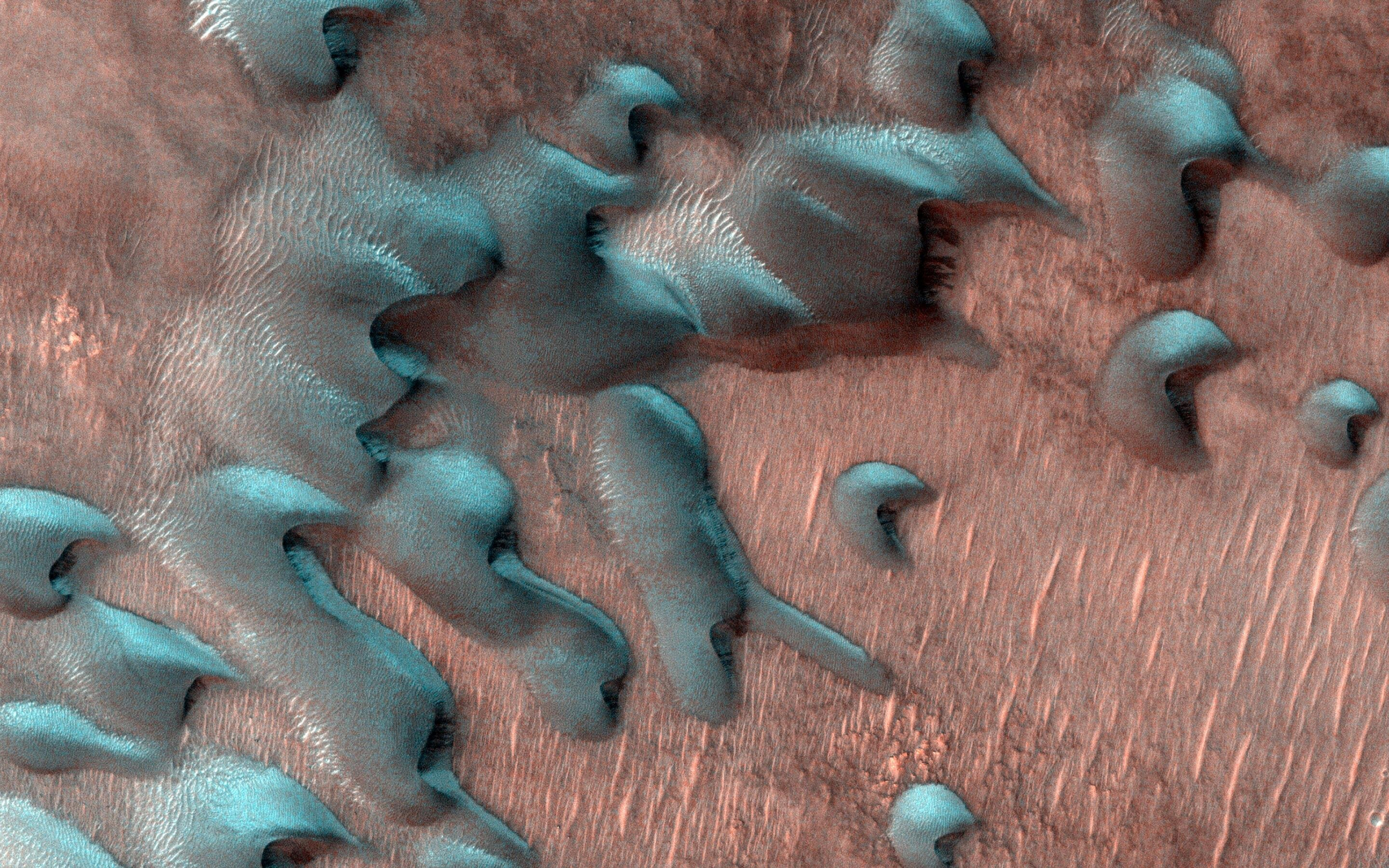Thanks to spaceships and rovers on Mars, scientists now know that the Red Planet also experiences winter, which is accompanied by frost (down to −123 °C at the poles), snow and ice. But, as befits an alien winter, the Martian winter has its own characteristics.
Sand dunes covered with frost © NASA/JPL-Caltech/University of Arizona
1. Two types of snow
The thin atmosphere of Mars consists mainly of carbon dioxide. In the cold, it freezes, turning into so-called dry ice, which falls to the surface in the form of snow. In the spring, such snow immediately turns back into a gaseous state, bypassing the liquid state. The process is called sublimation.
There are also crystals of water ice in the Martian atmosphere, but this type of snow evaporates or sublimates before reaching the surface.
As a rule, snow cover on Mars does not exceed a few centimeters. To ski, you would have to look for places where snow accumulates – for example, a crater or a rocky slope.
Martian dunes covered with ice © NASA/JPL-Caltech/University of Arizona
2. Cubic snowflakes
On Earth, snowflakes are made of water molecules (H2O), therefore they have a hexagonal shape. There is dry ice on Mars, made of carbon dioxide. (CO2), the molecules of which, when frozen, form crystals with four sides. space probe MRO showed that Martian snowflakes are smaller in diameter than the thickness of a human hair.
3. Lots of frost
On Mars, frost is much more common than snow. It may also consist of water or carbon dioxide. Water frost was observed by Viking spacecraft in the 1970s, and the Mars Odyssey orbiter recorded frost forming and then sublimating in the morning sun.
© NASA/JPL-Caltech/University of Arizona
4. Miracles at the end of winter
At the end of the cold season, the ice on Mars does not melt, but sublimates into the atmosphere, acquiring bizarre shapes. In addition, the spring sun heats the gas under the layer of translucent ice, which causes it to erupt outward along with dust.


